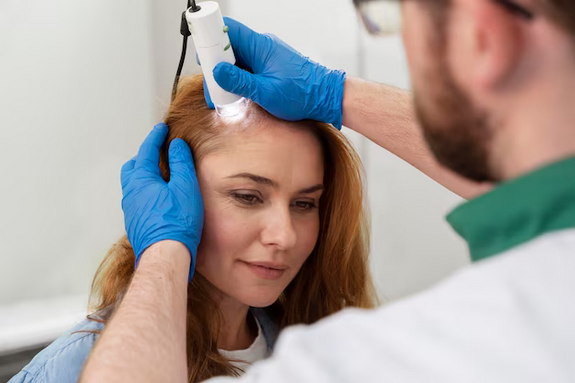In the ever-evolving landscape of cosmetic procedures, hair transplants have traditionally been associated with men seeking to combat male pattern baldness. However, in recent years, there has been a noticeable rise in the number of opting for hair transplant for women. This guide delves into the reasons behind the surge in popularity, the unique considerations for women, the procedure itself, and the emotional impact of regaining luscious locks.
Changing Beauty Standards: Women Embrace Hair Transplants
As societal perceptions of beauty continue to evolve, women are challenging traditional norms and embracing their autonomy in seeking aesthetic enhancements. The rise of female celebrities openly discussing their own experiences with hair loss and subsequent hair transplants has contributed to breaking down stigmas. Women are increasingly recognizing the transformative potential of hair transplants in restoring not just hair but also confidence and self-esteem.
Understanding Female Hair Loss: Breaking the Silence
Female hair loss is a prevalent but often underestimated concern. While men commonly experience male pattern baldness, women can face various causes of hair thinning and loss, including hormonal changes, genetics, and stress. The emotional impact of hair loss on women can be profound, influencing their self-image and overall well-being. Breaking the silence surrounding female hair loss has paved the way for open discussions and a growing acceptance of seeking solutions such as hair transplants.
Considerations for Women: A Unique Approach
Women considering hair transplants undergo a unique decision-making process compared to their male counterparts. The pattern of female hair loss differs, often involving diffuse thinning rather than distinct bald spots. Consequently, the surgical approach must be tailored to address these specific patterns. Thorough consultations with experienced surgeons are crucial for women to understand the suitability of the procedure and set realistic expectations.
The Procedure Unveiled: Tailoring Solutions for Women
Hair transplants for women typically involve two primary techniques: Follicular Unit Transplantation (FUT) and Follicular Unit Extraction (FUE). FUT involves the removal of a strip of tissue with hair follicles from the donor area, while FUE entails extracting individual follicular units directly. Surgeons carefully design the transplant to complement the natural flow and density of women's hair, ensuring a result that appears both aesthetically pleasing and natural.
Embracing Diversity: Cultural Shifts and Acceptance
The rise of hair transplants for women is also reflective of broader cultural shifts towards embracing diversity and challenging rigid beauty standards. Women from various cultural backgrounds are now more willing to explore options that empower them to take control of their appearance, including addressing hair loss. The increasing acceptance of diverse beauty ideals encourages women to pursue hair transplants as a means of enhancing their natural beauty.
Post-Transplant Care: Nurturing the Regrowth
Post-transplant care is a critical aspect of the journey for women seeking luscious locks. Following the surgeon's instructions, which may include gentle cleaning, medication, and avoiding certain activities, is essential for optimal results. The regrowth phase is a gradual process, requiring patience and diligence in adhering to the prescribed care routine. Regular follow-up appointments with the medical team enable monitoring of progress and adjustments if needed.
The Emotional Impact: Beyond Hair Regrowth
For women, the emotional impact of hair transplants extends beyond the physical regrowth of hair. The restoration of luscious locks often results in a significant boost in confidence and self-esteem. Women report feeling more empowered, reclaiming a sense of control over their appearance. The emotional transformation goes beyond aesthetics, influencing how women perceive themselves and interact with the world around them.
Conclusion: Empowering Women Through Luscious Locks
In conclusion, the rise of hair transplants for women signifies a transformative shift in societal attitudes towards beauty and self-expression. Women are breaking free from the constraints of traditional beauty standards, openly addressing and seeking solutions for hair loss. The unique considerations for female hair loss, the tailored approach in procedures, and the emotional impact on confidence highlight the empowering nature of luscious locks for women. As the conversation around female hair transplants continues to flourish, it becomes not just a cosmetic procedure but a symbol of empowerment and self-acceptance.





Comments